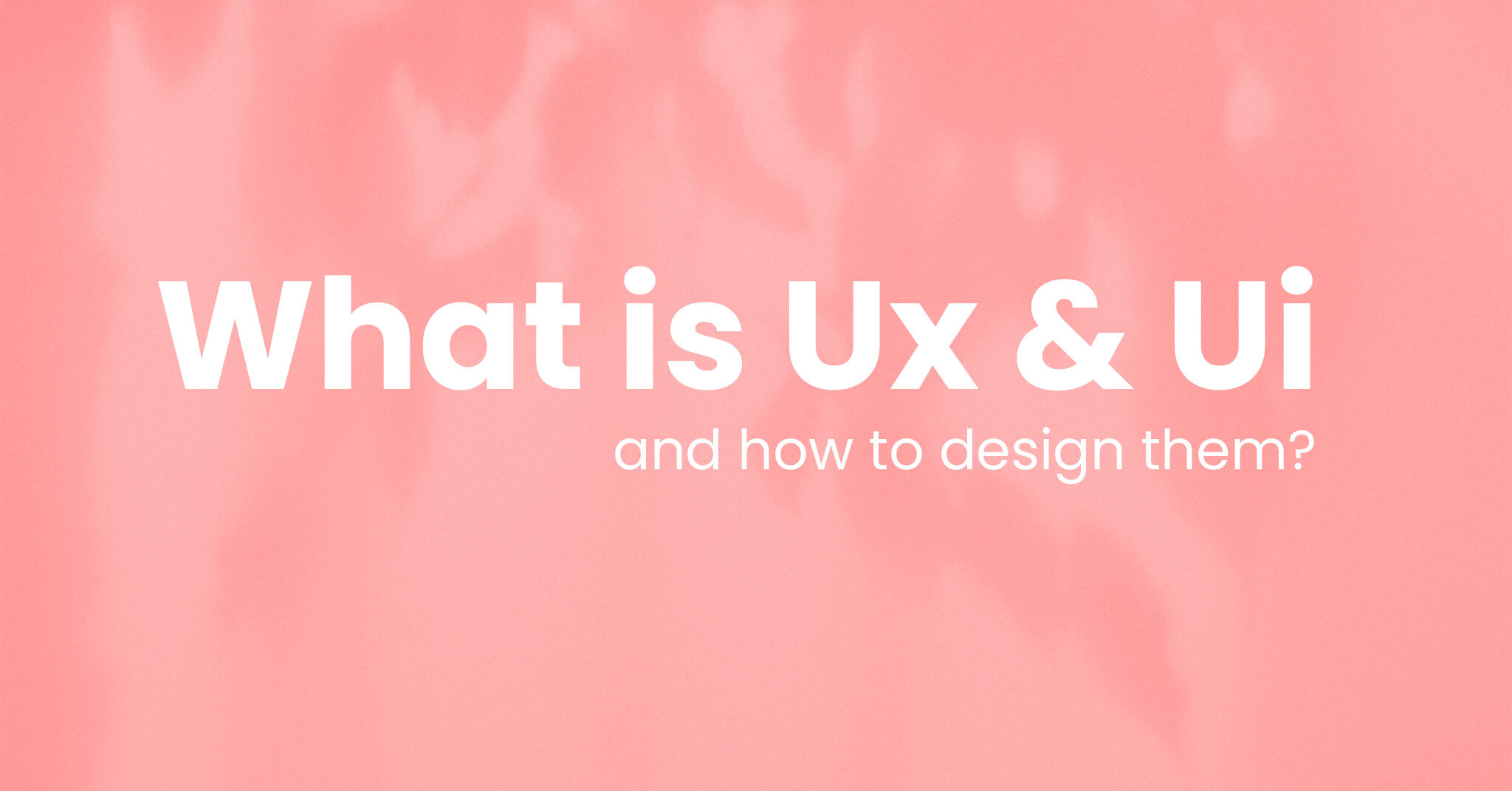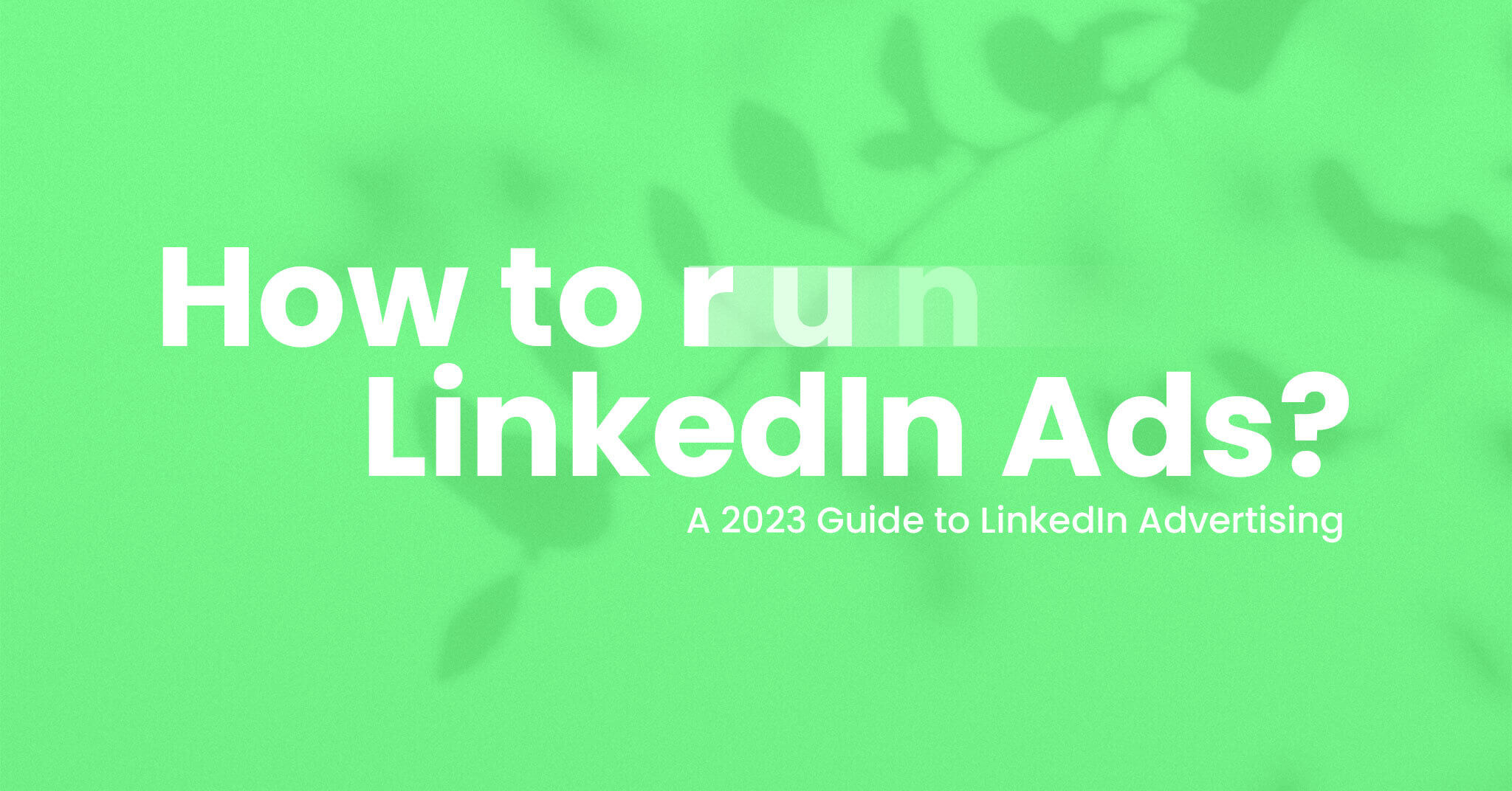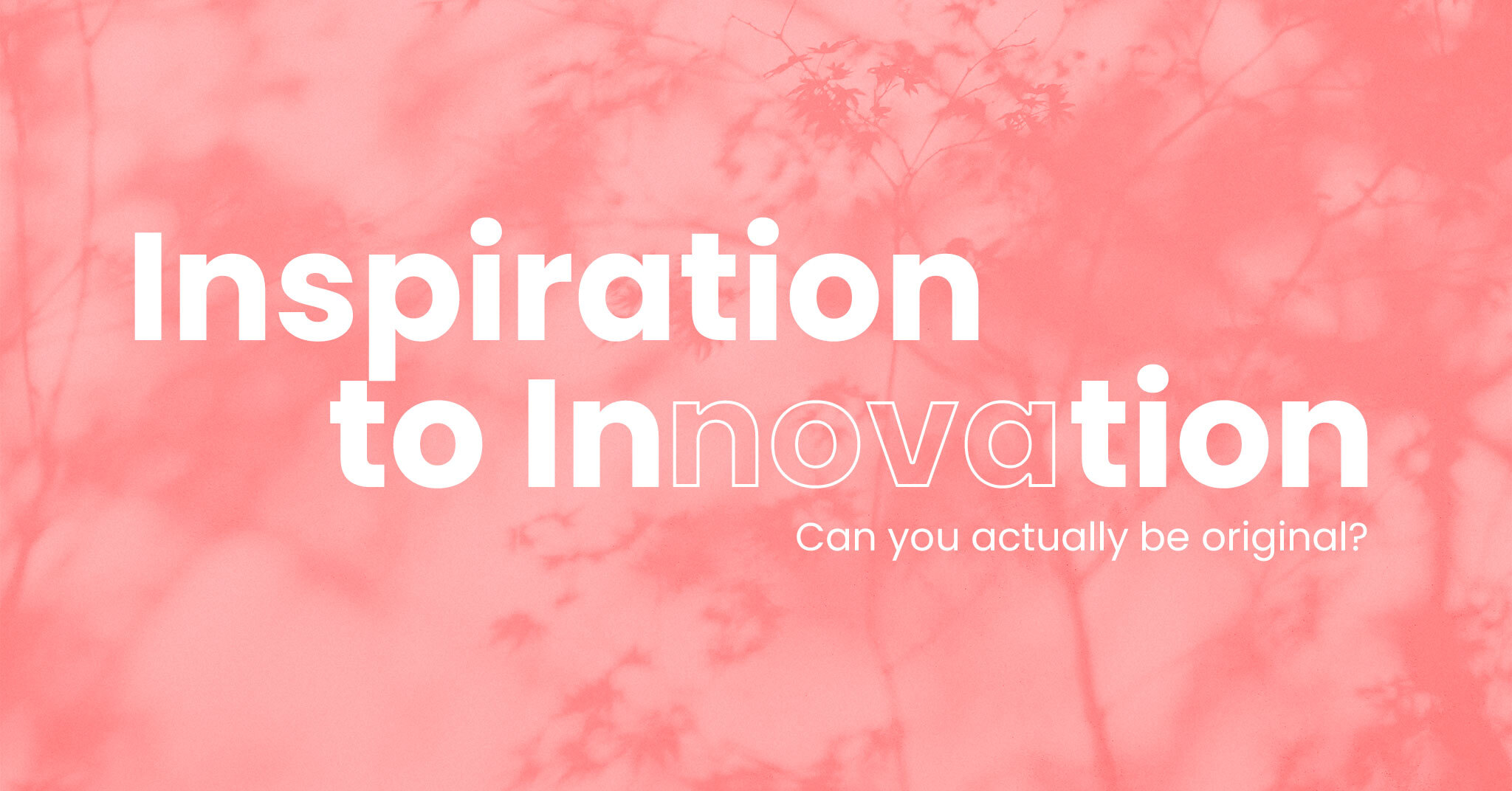How to run LinkedIn Ads? A 2023 Guide to LinkedIn Advertising
"LinkedIn is expensive. It's much better to run campaigns on Facebook, Twitter, TikTok" or "LinkedIn isn't for me. We can't afford to advertise there"- I hear it all the time, and you probably expect me to be the devil's advocate and fight hard for LinkedIn's cause, but I won't. LinkedIn is, in fact, expensive and definitely not for everyone, but you're here looking to learn how to run LinkedIn ads, so let's go there step by step.
- Campaign Objectives on LinkedIn
- The best audience size — LinkedIn Ads
- Targeting methods. How to pick your audience on LinkedIn Ads?
- Targeting options in LinkedIn. How to know what metrics should be used?
- LinkedIn's Audience Expansion — enable or not?
- Ad formats on LinkedIn. Which one is the right one for you?
- What's next? Budgets, Conversions, and Ads on LinkedIn
- Campaign Optimization. LinkedIn Ads
- What if my campaign didn't generate leads or conversions?
Let's assume that you already have a LinkedIn page and an ad account connected to your credit card. If that's not the case, you can find instructions on setting up an ad account here.
Campaign Objectives on LinkedIn
Like any other PPC platform, LinkedIn offers an array of goals and objectives to be accomplished with ads.
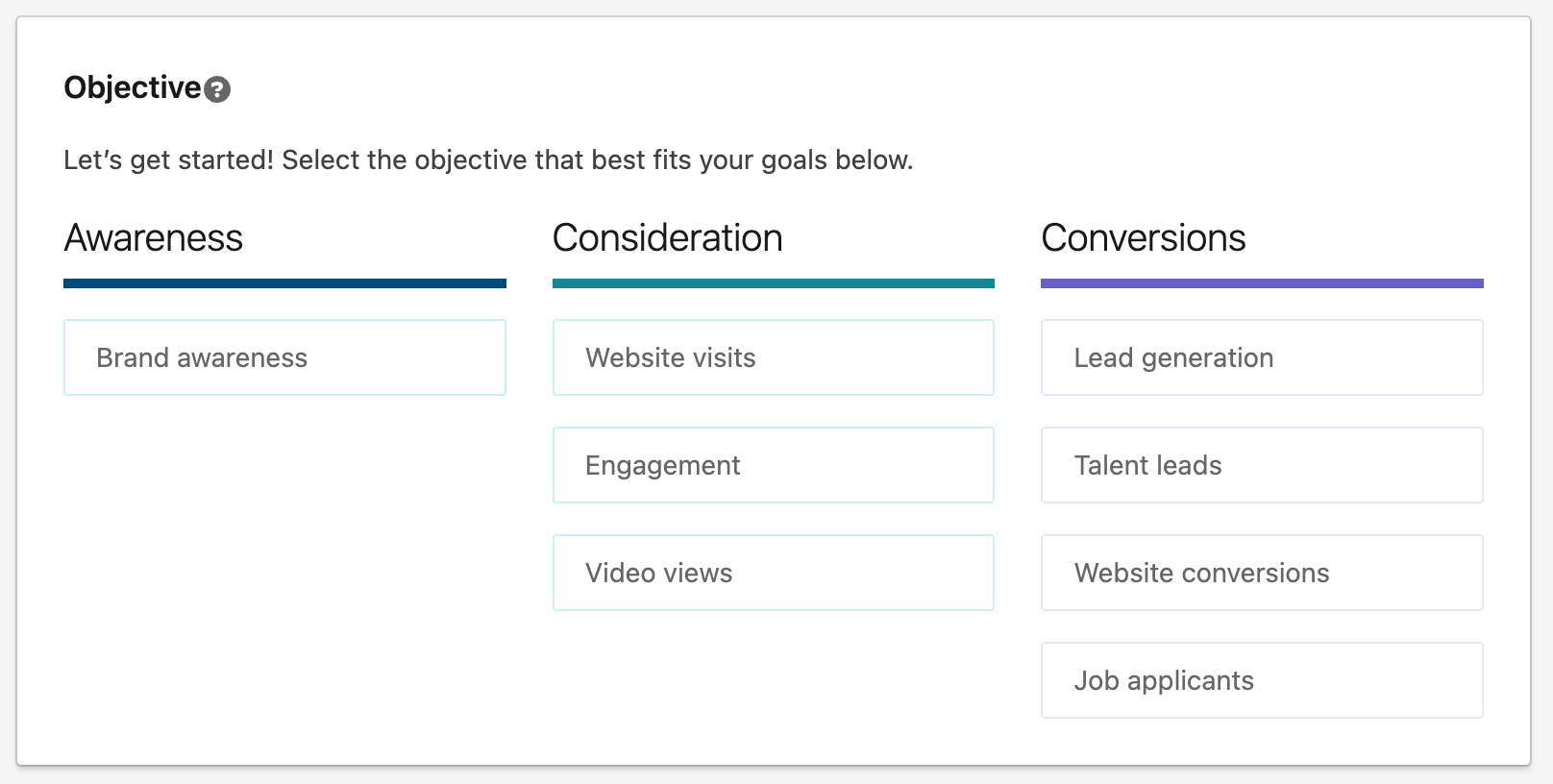
Awareness. If you follow our blog, you are probably already aware of my thoughts on brand awareness. But apart from that, if you wish your audience to see your message frequently and generating traffic, conversions, or leads isn't your primary goal, then this objective is for you.
- Consideration. In other words, Top of the Funnel, where our actions are focused around nurturing the traffic and getting the audience to interact with our brand.
- Website visits — a campaign objective designed to maximize the traffic on our website. It works best if we'd like to educate users, introduce them to what we offer, or for some other reason, we believe their visit to our website will benefit our business.
- Engagement — sometimes, a website visit isn't what we need. To boost our credibility by telling the world that we won an industry award or are introducing a new service, we don't need to acquire traffic from LinkedIn to our website. Then engagement objective is perfect to drive clicks, reactions, or comments directly to the post we're advertising.
- Video views — I agree that LinkedIn isn't the first thing that comes to mind when talking about video engagement generation, but let's not forget that adequately targeted content could not only convert but (what's more important) feed our remarketing audiences. Especially if we decide to create an audience based on the percentage of the video watched. Hey, if someone watched at least 75% of your video, it tells us something about getting their attention, right?
- Conversions
- Lead generation — you know exactly who your clients are? Perfect, run a campaign aimed at collecting valuable information with lead forms. This way, without the need to acquire traffic to your website, you can generate leads directly on LinkedIn. A pre-filled form with profile data of your potential customers is often an effective way to increase the volume of leads in your pipeline. Remember that it works best if utilized in remarketing or precisely targeted campaigns. Colder traffic may not be as responsive as you'd like.
- Talent leads — as LinkedIn's Unique Selling Point is its business-oriented profile, it's no wonder that businesses and recruiters use this platform to find new talent. With the Talent Leads campaign objective, you're able to display ads aimed at job applicants on your website or Landing Page.
- Website conversions — all right, forget about traffic, brand awareness, and job applicants. If your campaign should drive sales or leads, you're in the right place. With an Insight Tag, you can teach LinkedIn what actions on your website you want to measure, and with some learning curve, you'll be focusing on maximizing such conversions with this campaign type.
- Job applicants — with job posts published on LinkedIn, you can hope that the platform will display your job openings to your potential employees organically. It happens, sure. But it's the perfect campaign objective for you if you want to reach a larger talent pool or ensure that you deliver your message to people with a specific background. Users don't have to leave LinkedIn, and the application process is straightforward, impacting your conversion rate since the conversion happens in an environment where users are comfortable.
Disclaimer: LinkedIn claims that it will display your ads to relevant people who are likely to interact with your message the way you'd like them to.
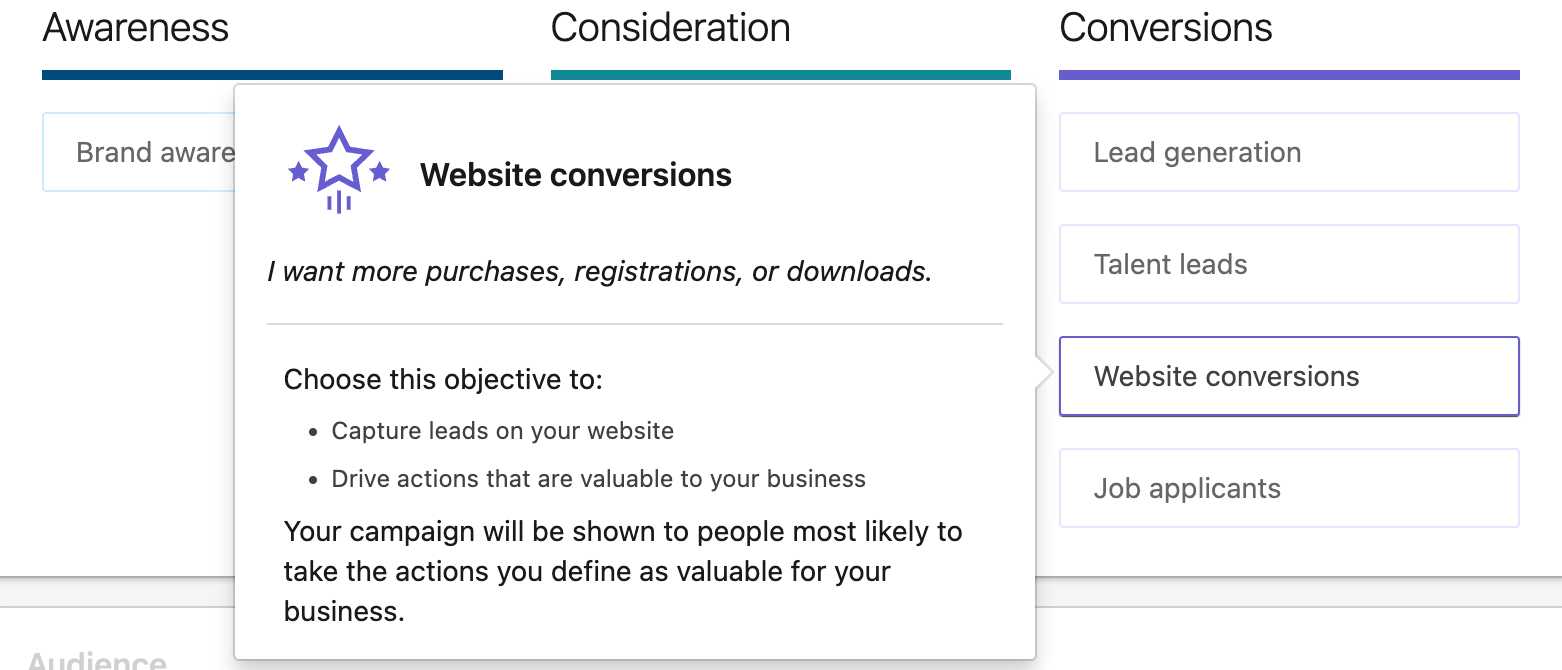
And as far as I agree with this promise when it comes to recruitment-related campaign types, with the Lead generation or website conversions, you still have to make sure that your audience is interested in what you offer. As much as possible, LinkedIn will show your ads to users who have converted historically or are similar to those who have. Still, it's not a magic wand that'll make you money on its own.
The best audience size — LinkedIn Ads

One of the most common mistakes people make on LinkedIn is taking general advice from the platform regarding the minimum target audience size. LinkedIn suggests the group should include at least 50 000 people.
And I agree — it doesn't make sense to start with a too precise audience. Keep in mind that you most probably won't reach all these people in the "Forecasted Results" window because:
- Not everyone uses LinkedIn regularly, and if someone is offline, this person will not see your ad;
- Other advertisers are fighting with you in auctions to display their ads to people in your audience. You won't always win the battle;
- For many reasons, algorithms may "decide" that a specific group of people should not be served with your ads
But I never recommend following the 50,000 people rule before I carefully analyze the product we'd like to sell.
Your audience size should be based on how many people there are who are your potential customers rather than based on an arbitrary number proposed by LinkedIn.
Targeting methods. How to pick your audience on LinkedIn Ads?
Let's assume that we run a website conversion campaign for Digiffic. We know our persona precisely: a C-level executive or Marketing Manager in a small to medium-sized company, preferably in the new technology industry (software development, startups, and so on). Just for the heck of it, let's say that, we'd like to acquire some clients from New York.
When setting up this campaign, I won't be trying to get the audience size to 50,000 people. I'd try to include only people that fit the profile:
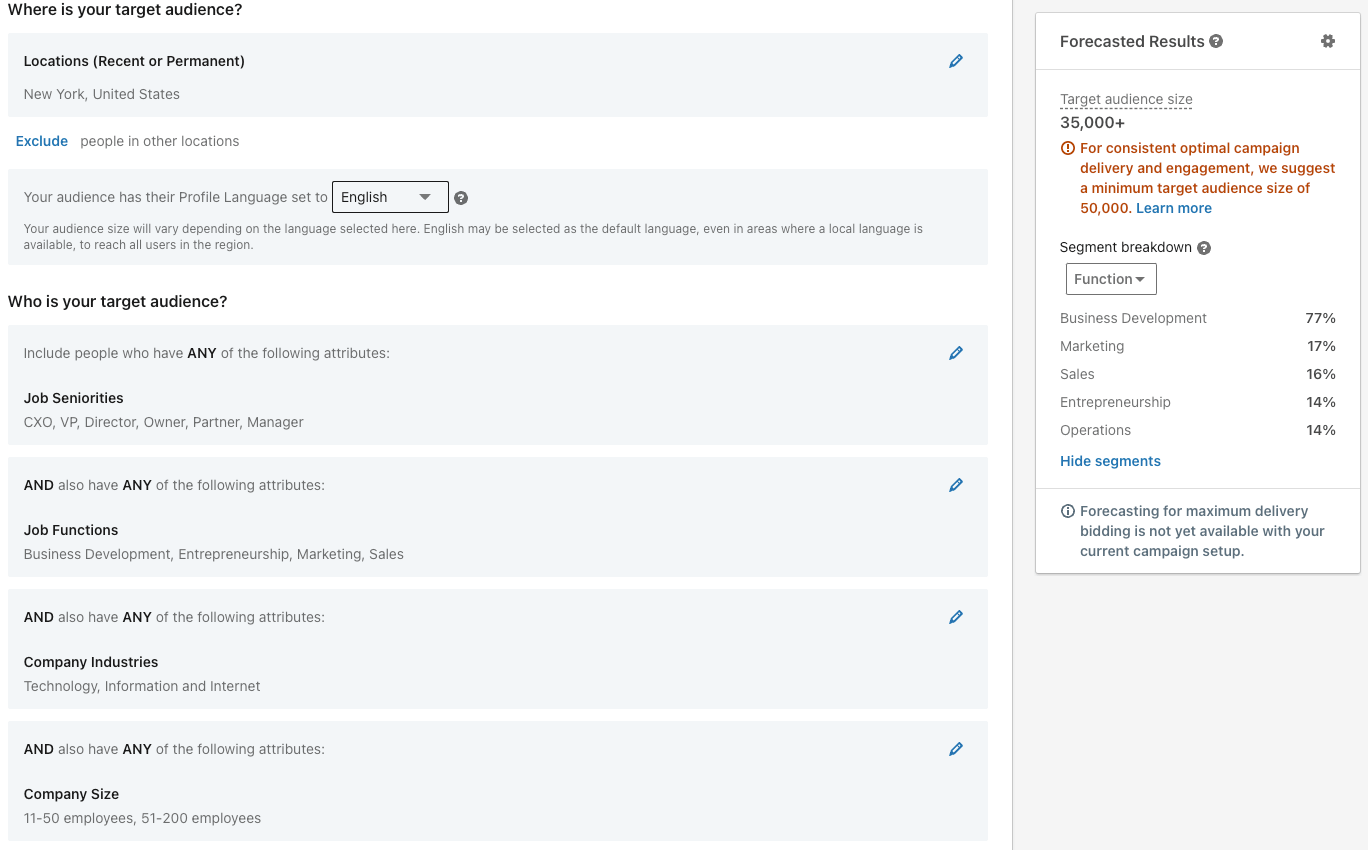
As you can see, my target audience includes people who live in (or have recently been to) New York, whose profile language is set to English, and whose job title is Manager, Partner, CXO (CEO, CFO, CMO, CTO, etc.), Director, or Owner. If I were to end here, I'd have 1.5 million people in my target audience — too many for our budget. So we narrowed the search to people who are responsible for either business development, entrepreneurship, marketing, or sales (since some decision makers, especially in smaller organizations, are directly responsible for sales, and they're the ones who need more leads). But then we'd still have too many people, so I focused on those who meet the above criteria but only work in the IT industry. In the last step, I now exclude corporations and smaller companies. Now we have 35,000 people.
Too many? Too few? No, it's perfect. It's as precise as I wanted. Why? The average CTR for sponsored content on LinkedIn is 0.44%, with an average conversion rate of around 6% in the US.
With an average CPC of 10 dollars (remember that we're talking about decision-makers in tech companies in New York), we can easily estimate what results we should expect.
With each 1,000 USD spend on ads, we should get 100 clicks. To generate 1 click, we need to get at least 225 impressions (0.44% CTR). With an average impressions-to-reach ratio of 4-6, I'd like to maintain that these 225 impressions should equal a total reach of 37.5-56.25 people. Just to generate 1 click.
We already know our benchmark for the conversion rate, which is 6%, so every 16.66 clicks, we should expect a conversion.
37.5×16.66 is 624.75 people; 56.25×16.66 is 937.12 people.
Let's assume that we'll reach 20,000 out of 35,000 people in our target audience; we can expect to have between 21 and 32 conversions with an estimated conversion cost of 166 USD and total investment ranging from $3,486 to $5,312.
Is that more than you're willing to invest? That's fine. Let's narrow it down further to companies with a growth rate of at least 10%. If they're scaling up, they could use some support from a performance marketing agency to get more leads.

We went from 35,000 to 20,000 people. And I can't stress that enough: your audience size shouldn't be too small or too big. It should reflect the number of people who may be interested in buying your product, knowing that not all potential customers will have a purchase intent for your product when they see your ads; the more, the better, but never more than we need.
Disclaimer: The company Growth Rate metric on LinkedIn is determined by the number of LinkedIn profiles associated with a company as employees in a 1-year period. If last year 40 people on their LI profiles stated that they work in a company X, and 12 months later that number grew to 48 associated profiles, then the growth rate would be 20%.
Targeting options in LinkedIn. How to know what metrics should be used?
If you're familiar with other PPC platforms, you know that Facebook or Google allows advertisers to target people based on the content they consume or their online behavior. LinkedIn takes advantage of a similar approach, but several significant differences exist.
- There are millions of websites with Facebook Pixel installed. It's a great source of user behavior information outside of Facebook for Meta. LinkedIn's Insight Tag has a much lower market penetration. This is the main reason LinkedIn knows less about what and how people behave when they're off-platform compared to its competitors like Google or Facebook.
- LinkedIn is primarily a business-oriented platform. This is why most of the information users provide is related to their careers, education, or job roles. It's a huge advantage when we sell B2B products or services because Facebook, Twitter, or TikTok offer far fewer options to reach decision-makers in specific industries or markets.
- LinkedIn is a great platform to support your Account Based Marketing (ABM) since it allows you to display your message to people relevant to you in a selected industry and people employed in specific companies. This way, you don't have to research people responsible for X in companies you'd like to onboard as your clients and reach out personally. Instead, you can scale up and automate this process with LinkedIn Ads.
Knowing all this, we can discuss in more detail what options are available on LinkedIn Ads.
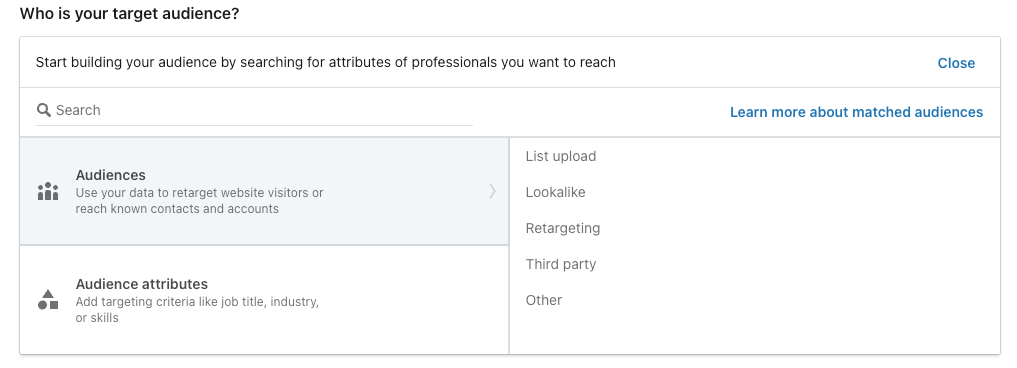
There are 2 main categories:
- Audiences. This takes advantage of the information you have or collected from potential customers, including:
- List upload. A list of companies or contacts you'd like to share your message with (up to 300,000 contacts).
- Lookalike. An audience most similar to your input source/matched audience to reach people who are not your clients yet, but share identical behavior patterns with your existing clients.
- Retargeting. To reach people who previously interacted with your brand on your website or directly on LinkedIn.
- Third-party. A fun but rarely used feature that allows advertisers to utilize the data they have on us but were collected outside of LinkedIn.
- Other. Basically, the target audience attribute settings you saved in the past because you felt you'd use them more frequently.
- Audience attributes. Here's where you'll spend most of your time in the LinkedIn ad dashboard. It's because it allows you to reach people who meet your criteria, such as company profile, size, growth rate, or even revenue (to some extent), and hundreds more metrics to ensure that relevant people see your ads.
- Company — industry, size, growth rate, revenue, and pretty much everything you can think of related to what the company does and how big it is.
- Demographics — age and gender-based targeting.
- Education — if you'd like to reach people with a degree in a specific field or who went to particular schools or universities, that's your option. You can also take advantage of a more general approach and select users who studied a field selected by you.
- Job Experience — from seniority level to years of experience. You can go as deep as the job title or skills people claim they have.
- Interests and Traits — this option lets you target people who are members of various LinkedIn groups or are interested in different things (based on their profile configuration and the content they consume)>

Disclaimer: Don't overlook exclusion options. It allows you to ensure that people who don't fit your persona profile won't see your ads, and as a result, you won't burn the money you invested in LinkedIn Ads.
LinkedIn's Audience Expansion — enable or not?

You may wonder whether it's worth enabling Audience Expansion (most likely it was enabled by default). There's no simple answer to that. If your targeting strategy takes advantage of general profiling, i.e., it doesn't require a particular background or specific job role, then it's worth a try.
Audience Expansion is a way to reach people beyond your target audience, but it is still similar to it. If there are chances that other people whom you selected may also be interested in buying your product, then it's not a bad idea to test this feature.
Ad formats on LinkedIn. Which one is the right one for you?
While we are writing this guide, LinkedIn offers 7 different formats you can choose for your ads. Most of them are pretty obvious, such as the "single image ad" or the "carousel image ad," where you select either one or more images. Then you add copy, description, and a headline to make your ad look like a regular LinkedIn post. However, some formats require additional explanation.
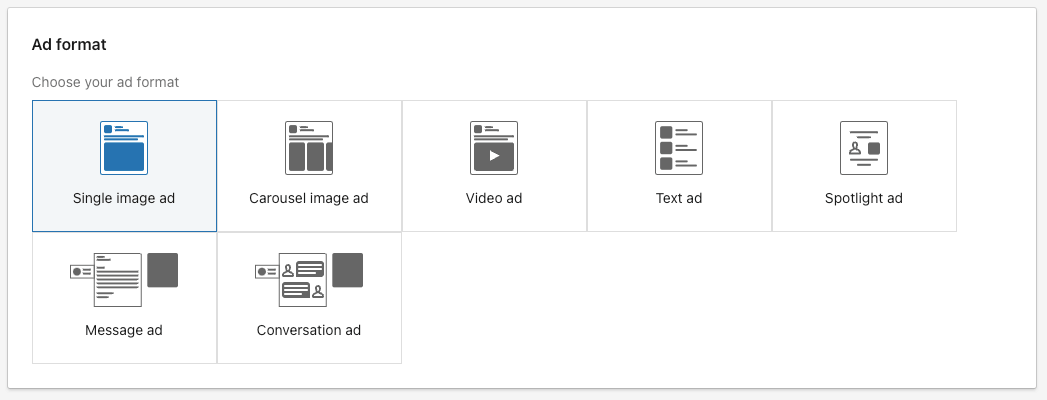
Text ads. A placement designed only for LinkedIn on desktop devices. Did you notice this small box on the right next to your feed? This is a text ad. Relatively non-aggressive format for people who don't expect high CTRs. You can expect a slightly lower CPC for text ads compared to CPC from feed ads.
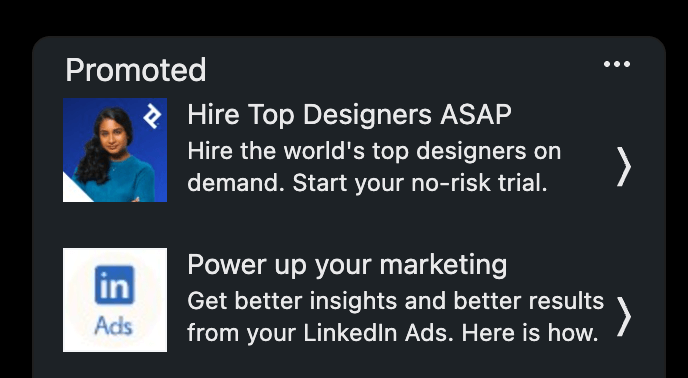
Spotlight ads. Personalization is everything. LinkedIn feels the same way about it. This is why they introduced an ad format that allows you to use the user's name and profile picture to provide a personalized experience and drive engagement from the ad itself. It's an interesting way of attracting potential employees to apply for a job or drive traffic to your website. Keep in mind that it utilizes the exact same placement as text ads, so the right side of the screen on desktops, next to your feed.
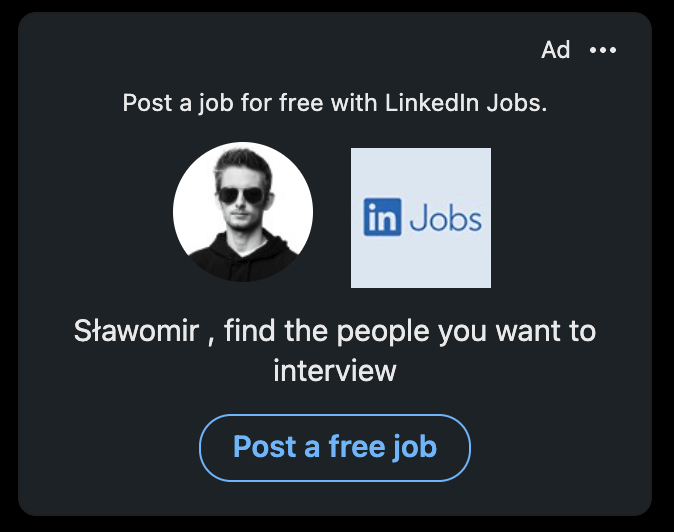
Message ads. It's pretty self-explanatory — you draft a message, and it appears in your audience inboxes. You can include a call-to-action button that drives the traffic to your website or landing page, but what's noteworthy about this format is that you pay for each delivered message (Cost per send, CPS). It's crucial because message ads don't appear in your inbox like regular messages — they appear there as sponsored messages and are often used in recruitment campaigns or ground for personalized sales pitches. Users can't reply to message ads.
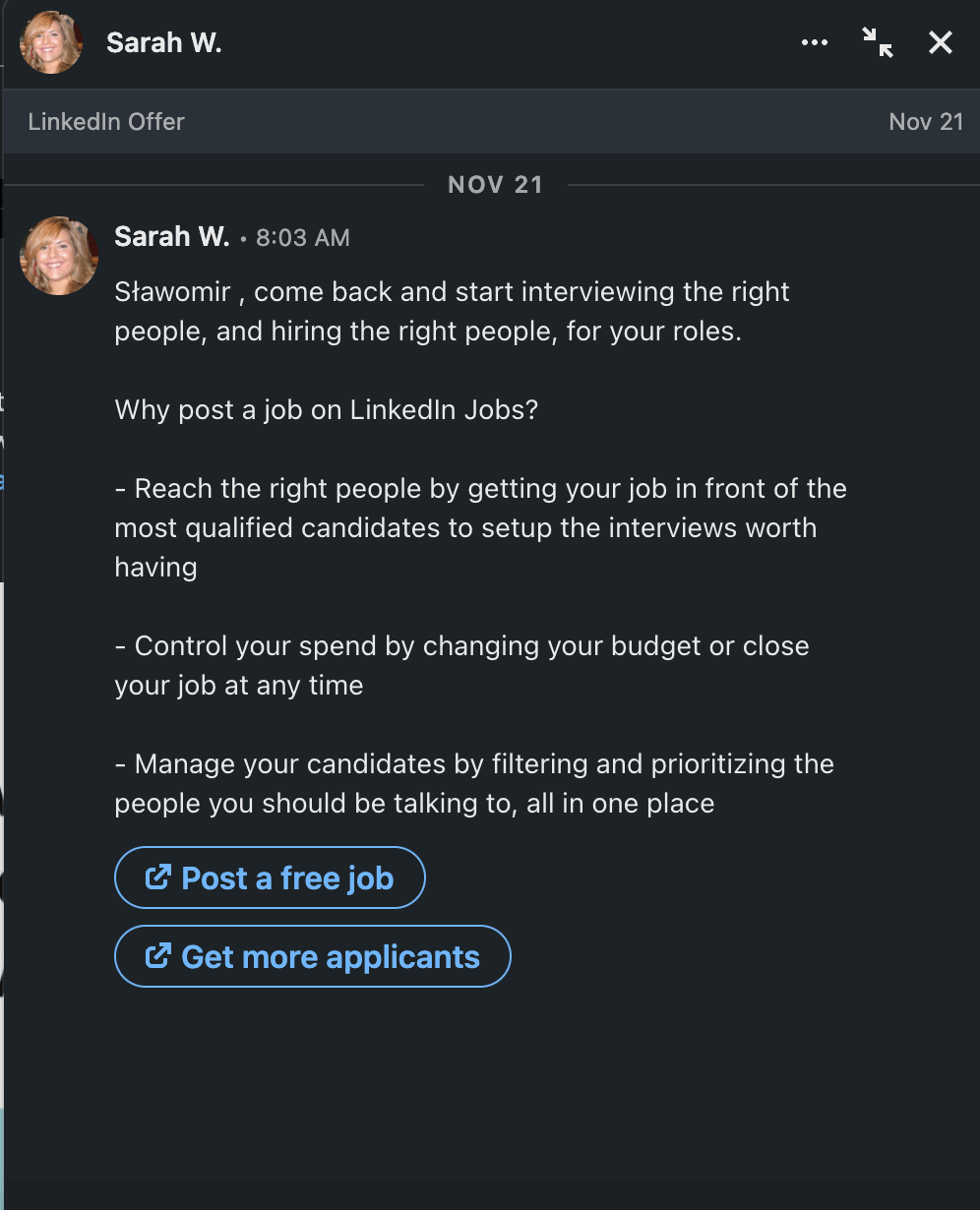
Conversation ads. A much more complex solution compared to message ads. Your conversation ads may include more call-to-action messages (i.e., links), and they allow recipients to respond to your messages so that you can engage in conversation with potential customers.
What's next? Budgets, Conversions, and Ads on LinkedIn
Now, we have already decided what our campaign objective should be, and we've taken care of the target audience and ad format. It's finally time to work on setting budgets and bidding strategies. It's pretty straightforward, so it doesn't require additional explanation. Still, the only tip I can share is that, in the beginning, I'd recommend going with lower brackets recommended by LinkedIn bidding amount.

Why? It's because these PPC companies are in the business of making money, and their goal is to be effective, to make you keep spending money with them, but they also care deeply about how much you're spending with them now. Often bidding lower than recommended still allows you to achieve good results. If it's not the case in your situation, you can always increase the max cost-per-click, cost-per-conversion, or cost-per-send. But it's worth the shot.
The next step is measuring conversions. If you'd like to analyze how many form submits or thank you page visits were generated from your ad traffic, you need to configure Insight Tag (available in your ad account) and follow the instructions step by step.
Then you'll be able to set conversion tracking and learn how many valuable actions were a result of your campaign.
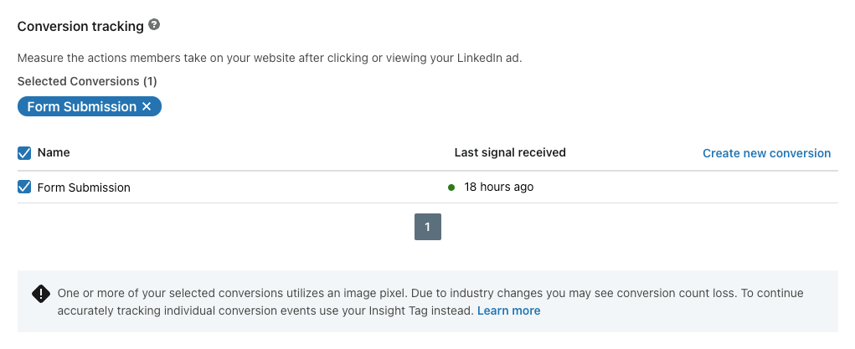
Now, all that's left is to create your ads on the next screen, review the configuration one last time and see how your traffic performs.
Is that it? Not a chance. It's already been almost 3,000 words, but now the real fun begins.
Campaign Optimization. LinkedIn Ads
After your campaign is live, it's time for optimization. Analyze metrics, determining how well the audience is receiving your ads. Then measure the conversion rate, conversions volume, and overall cost of your campaigns to either modify existing ad sets or ads, replace them with alternatives or turn off those that didn't deliver the expected results.

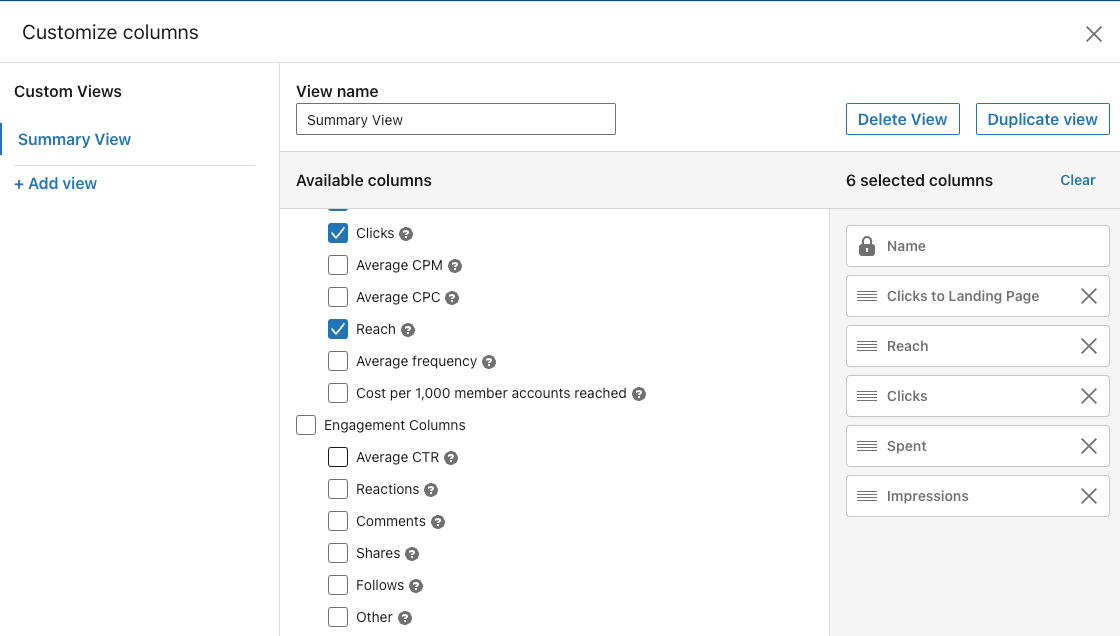
The default campaign overview provides insight into the most important metrics, but remember that you can always modify columns in the dashboard.
What if my campaign didn't generate leads or conversions?
There could be many reasons behind lower than expected performance of your LinkedIn campaigns. Please remember that LinkedIn requires a higher initial investment than other platforms. Most sources suggest starting with at least 2,000 USD, while others state that 5,000 USD is a good starting point.
Most advertisers aren't willing to pay so much to experiment with a new platform. Unfortunately, lead generation on LinkedIn will rarely be effective with an investment of several hundred dollars. Sure, it all depends on who your customer is and what's industry or country you're running your campaign in, but you should never expect the traffic costs you experience on Facebook or Twitter.
The good practice to follow when designing a campaign on Twitter is to utilize the basic sales funnel, where the first campaign is broader and lets you identify people with some purchase intent. The other one (remarketing) is focused on grabbing the warmer audience's attention and pushing toward conversion.
The best approach is to measure the performance of various targeting approaches and regular A/B testing of copy and visual assets to determine what's most appealing to the audience. Based on the data, optimize your campaign.
Remember that all your actions should be data-driven. People may behave differently from what you expect them to, but numbers never lie.
Still, if your product or service is not expensive, think twice about advertising on a platform with one of the most expensive traffic among all major PPC platforms. In this case, the organic activity would be more profitable.
.jpg?width=1728&height=972&name=Tytu%C5%82owa_HowToRunLinkedInAds_30_12_2022%20(1).jpg)

